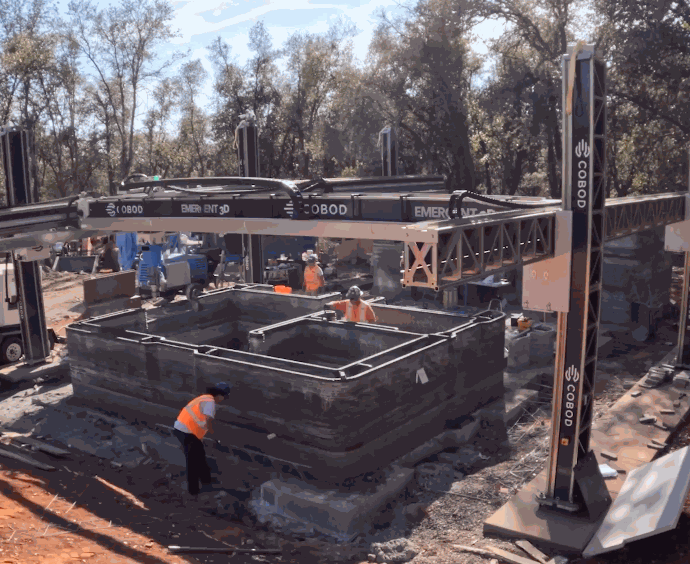3D Printing Concrete: Revolutionizing Construction
Over the past few years, 3D printing technology has surpassed its initial limitations in the realm of plastics to find innovative uses across a variety of sectors. One such revolutionary advancement is the 3D printing of concrete, a process that has the potential to reshape the construction landscape. This blog talks about 3D printing concrete, how it can be used, its benefits, and how it figures in CASA-i’s future.
Understanding 3D Printing Concrete
3D printing, also known as additive manufacturing, involves layer-by-layer deposition of cementitious material to create three-dimensional structures. Digital models are entered into a computer that drive this procedure through the use of a robotic arm or gantry, The use of robotics facilitates a high degree of accuracy and personalization.
In the world of concrete construction, this process is more similar to laying bricks or blocks than it is to molding concrete, just the shape and Concrete molds typically require additional time, costs and result in the use of more material to achieve a 3d object, like a wall. Additive manufacturing is a process that typically refers to 3D printing, even though it can refer to any process where one element is added to another to create.
Materials Used in 3D Printing Concrete:
The materials used in 3D printing concrete vary, but typically include a mixture of cement, aggregates, and additives. These formulations are optimized for the specific requirements of the printing process, ensuring durability and structural integrity in the final product. Many groups are working on expanding the materials used for 3D printing houses and structural components.
There are numerous uses for 3D-printed concrete, but three stand out as promising: affordable housing, intricate architectural designs, and infrastructure development. The precision and strength of 3D-printed components can contribute to the longevity and resilience of these critical structures.
Advantages of 3D Printing Concrete:
Speed: Traditional construction methods often require significant time and manpower. 3D printing concrete drastically accelerates the building process, reducing construction timelines and minimizing labor costs.
Efficiency: The efficient use of materials, coupled with the faster construction timelines, results in cost savings. This makes 3D printing concrete an attractive option for projects with tight budgets. “Because additive manufacturing builds layer by layer, using only the material and energy required to make a particular component, it’s a far more efficient building process than “subtractive methods,” which involve cutting away excess material – think milling a wood beam out of a tree.” (See article here).
Reduced Environmental Impact: By optimizing material use and minimizing waste, 3D printing concrete contributes to sustainability in construction. Additionally, the potential to incorporate recycled materials into the printing mixture can further reduce the environmental footprint.
What does this mean for CASA-i?
The advent of 3D printing concrete marks a significant leap forward in the construction industry. Using a 3D printer with materials we know - like the concrete we use in our houses - provides us with a powerful tool with manifold benefits for us and our clients. Some of these benefits include: turning laborious construction jobs into new and safer tech jobs for our workforce, providing better quality control, and superior performance for our final products. We are excited to add this growing, innovative technology to our capabilities and to implement it for you.
🔎 Want to dig deeper?
- https://www.archdaily.com/921635/eth-zurich-develops-3d-printed-concrete-columns
- https://formlabs.com/blog/additive-manufacturing-vs-subtractive-manufacturing/

